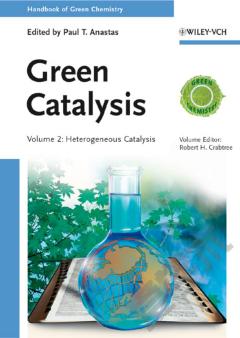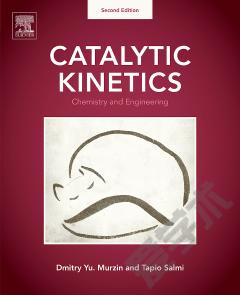Green Chemistry and Catalysis
Preface. Foreword. 1 Introduction: Green Chemistry and Catalysis. 1.1 Introduction. 1.2. E Factors and Atom Efficiency. 1.3 The Role of Catalysis. 1.4 The Development of Organic Synthesis. 1.5 Catalysis by Solid Acids and Bases. 1.6 Catalytic Reduction. 1.7 Catalytic Oxidation. 1.8 Catalytic C-C Bond Formation. 1.9 The Question of Solvents: Alternative Reaction Media. 1.10 Biocatalysis. 1.11 Renewable Raw Materials and White Biotechnology. 1.12 Enantioselective Catalysis. 1.13 Risky Reagents. 1.14 Process Integration and Catalytic Cascades. References. 2 Solid Acids and Bases as Catalysts. 2.1 Introduction. 2.2 Solid Acid Catalysis. 2.2.1 Acidic Clays. 2.2.2 Zeolites and Zeotypes: Synthesis and Structure. 2.2.3 Zeolite-catalyzed Reactions in Organic Synthesis. 2.2.3.1 Electrophilic Aromatic Substitutions. 2.2.3.2 Additions and Eliminations. 2.2.3.3 Rearrangements and Isomerizations. 2.2.3.4 Cyclizations. 2.2.4 Solid Acids Containing Surface SO3H Functionality. 2.2.5 Heteropoly Acids. 2.3 Solid Base Catalysis. 2.3.1 Anionic Clays: Hydrotalcites. 2.3.2 Basic Zeolites. 2.3.3 Organic Bases Attached to Mesoporous Silicas. 2.4 Other Approaches. References. 3 Catalytic Reductions. 3.1 Introduction. 3.2 Heterogeneous Reduction Catalysts. 3.2.1 General Properties. 3.2.2 Transfer Hydrogenation Using Heterogeneous Catalysts. 3.2.3 Chiral Heterogeneous Reduction Catalysts. 3.3 Homogeneous Reduction Catalysts. 3.3.1 Wilkinson Catalyst. 3.3.2 Chiral Homogeneous Hydrogenation Catalysts and Reduction of the C= C Double Bond. 3.3.3 Chiral Homogeneous Catalysts and Ketone Hydrogenation. 3.3.4 Imine Hydrogenation. 3.3.5 Transfer Hydrogenation using Homogeneous Catalysts. 3.4 Biocatalytic Reductions. 3.4.1 Introduction. 3.4.2 Enzyme Technology in Biocatalytic Reduction. 3.4.3 Whole Cell Technology for Biocatalytic Reduction. 3.5 Conclusions. References. 4 Catalytic Oxidations. 4.1 Introduction. 4.2 Mechanisms of Metal-catalyzed Oxidations: General Considerations. 4.2.1 Homolytic Mechanisms. 4.2.1.1 Direct Homolytic Oxidation of Organic Substrates. 4.2.2 Heterolytic Mechanisms. 4.2.2.1 Catalytic Oxygen Transfer. 4.2.3 Ligand Design in Oxidation Catalysis. 4.2.4 Enzyme Catalyzed Oxidations. 4.3 Alkenes. 4.3.1 Epoxidation. 4.3.1.1 Tungsten Catalysts. 4.3.1.2 Rhenium Catalysts. 4.3.1.3 Ruthenium Catalysts. 4.3.1.4 Manganese Catalysts. 4.3.1.5 Iron Catalysts. 4.3.1.6 Selenium and Organocatalysts. 4.3.1.7 Hydrotalcite and Alumina Systems. 4.3.1.8 Biocatalytic Systems. 4.3.2 Vicinal Dihydroxylation. 4.3.3 Oxidative Cleavage of Olefins. 4.3.4 Oxidative Ketonization. 4.3.5 Allylic Oxidations. 4.4 Alkanes and Alkylaromatics. 4.4.1 Oxidation of Alkanes. 4.4.2 Oxidation of Aromatic Side Chains. 4.4.3 Aromatic Ring Oxidation. 4.5 Oxygen-containing Compounds. 4.5.1 Oxidation of Alcohols. 4.5.1.1 Ruthenium Catalysts. 4.5.1.2 Palladium-catalyzed Oxidations with O 2 . 4.5.1.3 Gold Catalysts. 4.5.1.4 Copper Catalysts. 4.5.1.5 Other Metals as Catalysts for Oxidation with O 2 . 4.5.1.6 Catalytic Oxidation of Alcohols with Hydrogen Peroxide. 4.5.1.7 Oxoammonium Ions in Alcohol Oxidation. 4.5.1.8 Biocatalytic Oxidation of Alcohols. 4.5.2 Oxidative Cleavage of 1,2-Diols. 4.5.3 Carbohydrate Oxidation. 4.5.4 Oxidation of Aldehydes and Ketones. 4.5.4.1 Baeyer-Villiger Oxidation. 4.5.5 Oxidation of Phenols. 4.5.6 Oxidation of Ethers. 4.6 Heteroatom Oxidation. 4.6.1 Oxidation of Amines. 4.6.1.1 Primary Amines. 4.6.1.2 Secondary Amines. 4.6.1.3 Tertiary Amines. 4.6.1.4 Amides. 4.6.2 Sulfoxidation. 4.7 Asymmetric Oxidation. 4.7.1 Asymmetric Epoxidation of Olefins. 4.7.2 Asymmetric Dihydroxylation of Olefins. 4.7.3 Asymmetric Sulfoxidation. 4.7.4 Asymmetric Baeyer-Villiger Oxidation. 4.5 Conclusion. References. 5 Catalytic Carbon-Carbon Bond Formation. 5.1 Introduction. 5.2 Enzymes for Carbon-Carbon Bond Formation. 5.2.1 Enzymatic Synthesis of Cyanohydrins. 5.2.1.1 Hydroxynitrile Lyases. 5.2.1.2 Lipase-based Dynamic Kinetic Resolution. 5.2.2 Enzymatic Synthesis of &alpha -Hydroxyketones (Acyloins). 5.2.3 Enzymatic Synthesis of &alpha -Hydroxy Acids. 5.2.4 Enzymatic Synthesis of Aldols (&beta -Hydroxy Carbonyl Compounds). 5.2.4.1 DHAP-dependent Aldolases. 5.2.4.2 PEP- and Pyruvate-dependent Aldolases. 5.2.4.3 Glycine-dependent Aldolases. 5.2.4.4 Acetaldehyde-dependent Aldolases. 5.2.5 Enzymatic Synthesis of &beta -Hydroxynitriles. 5.3 Transition Metal Catalysis. 5.3.1 Carbon Monoxide as a Building Block. 5.3.1.1 Carbonylation of R-X (CO "Insertion/R-migration"). 5.3.1.2 Aminocarbonylation. 5.3.1.3 Hydroformylation or "Oxo" Reaction. 5.3.1.4 Hydroaminomethylation. 5.3.1.5 Methyl Methacrylate via Carbonylation Reactions. 5.3.2 Heck-type Reactions. 5.3.2.1 Heck Reaction. 5.3.2.2 Suzuki and Sonogashira Reaction. 5.3.3 Metathesis. 5.3.3.1 Metathesis involving Propylene. 5.3.3.2 Ring-opening Metathesis Polymerization (ROMP). 5.3.3.3 Ring-closing Metathesis (RCM). 5.4 Conclusion and Outlook. References. 6 Hydrolysis. 6.1 Introduction. 6.1.1 Stereoselectivity of Hydrolases. 6.1.2 Hydrolase-based Preparation of Enantiopure Compounds. 6.1.2.1 Kinetic Resolutions. 6.1.2.2 Dynamic Kinetic Resolutions. 6.1.2.3 Kinetic Resolutions Combined with Inversions. 6.1.2.4 Hydrolysis of Symmetric Molecules and the "meso-trick." 6.2 Hydrolysis of Esters. 6.2.1 Kinetic Resolutions of Esters. 6.2.2 Dynamic Kinetic Resolutions of Esters. 6.2.3 Kinetic Resolutions of Esters Combined with Inversions. 6.2.4 Hydrolysis of Symmetric Esters and the "meso-trick." 6.3 Hydrolysis of Amides. 6.3.1 Production of Amino Acids by (Dynamic) Kinetic Resolution. 6.3.1.1 The Acylase Process. 6.3.1.2 The Amidase Process. 6.3.1.3 The Hydantoinase Process. 6.3.1.4 Cysteine. 6.3.2 Enzyme-catalysed Hydrolysis of Amides. 6.3.3 Enzyme-catalysed Deprotection of Amines. 6.4 Hydrolysis of Nitriles. 6.4.1 Nitrilases. 6.4.2 Nitrile Hydratases. 6.5 Conclusion and Outlook. References. 7 Catalysis in Novel Reaction Media. 7.1 Introduction. 7.1.1 Why use a solvent? 7.1.2 Choice of Solvent. 7.1.3 Alternative Reaction Media and Multiphasic Systems. 7.2 Two Immiscible Organic Solvents. 7.3 Aqueous Biphasic Catalysis. 7.3.1 Olefin Hydroformylation. 7.3.2 Hydrogenation. 7.3.3 Carbonylations. 7.3.4 Other C-C Bond Forming Reactions. 7.3.5 Oxidations. 7.4 Fluorous Biphasic Catalysis. 7.4.1 Olefin Hydroformylation. 7.4.2 Other Reactions. 7.5 Supercritical Carbon Dioxide. 7.5.1 Supercritical Fluids. 7.5.2 Supercritical Carbon Dioxide. 7.5.3 Hydrogenation. 7.5.4 Oxidation. 7.5.5 Biocatalysis. 7.6 Ionic Liquids. 7.7 Biphasic Systems with Supercritical Carbon Dioxide. 7.8 Thermoregulated Biphasic Catalysis. 7.9 Conclusions and Prospects. References. 8 Chemicals from Renewable Raw Materials. 8.1 Introduction. 8.2 Carbohydrates. 8.2.1 Chemicals from Glucose via Fermentation. 8.2.2 Ethanol. 8.2.2.1 Microbial Production of Ethanol. 8.2.2.2 Green Aspects. 8.2.3 Lactic Acid. 8.2.4 1,3-Propanediol. 8.2.5 3-Hydroxypropanoic Acid. 8.2.6 Synthesizing Aromatics in Nature's Way. 8.2.7 Aromatic -Amino Acids. 8.2.7 Indigo: the Natural Color. 8.2.8 Pantothenic Acid. 8.2.9 The &beta -Lactam Building Block 7-Aminodesacetoxycephalosporanic Acid. 8.2.9 Riboflavin. 8.3 Chemical and Chemoenzymatic Transformations of Carbohydrates into Fine Chemicals and Chiral Building Blocks. 8.3.1 Ascorbic Acid. 8.3.2 Carbohydrate-derived C3 and C4 Building Blocks. 8.3.3 5-Hydroxymethylfurfural and Levulinic Acid. 8.4 Fats and Oils. 8.4.1 Biodiesel. 8.4.2 Fatty Acid Esters. 8.5 Terpenes. 8.6 Renewable Raw Materials as Catalysts. 8.7 Green Polymers from Renewable Raw Materials. 8.8 Concluding Remarks. References. 9 Process Integration and Cascade Catalysis. 9.1 Introduction. 9.2 Dynamic Kinetic Resolutions by Enzymes Coupled with Metal Catalysts. 9.3 Combination of Asymmetric Hydrogenation with Enzymatic Hydrolysis. 9.4 Catalyst Recovery and Recycling. 9.5 Immobilization of Enzymes: Cross-linked Enzyme Aggregates (CLEAs). 9.6 Conclusions and Prospects. References. 10 Epilogue: Future Outlook. 10.1 Green Chemistry: The Road to Sustainability. 10.2 Catalysis and Green Chemistry. 10.3 The Medium is the Message. 10.4 Metabolic Engineering and Cascade Catalysis. 10.5 Concluding Remarks. References. Subject Index.
{{comment.content}}








 京公网安备 11010802027623号
京公网安备 11010802027623号